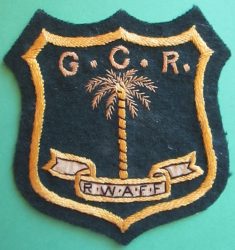Personal Details
Born:In 1894 in Whitchurch, Shropshire.
Family: He was the third of six children born to George Harper, a blacksmith and his wife Ann. He married Constance M. Pace in 1919 in Whitchurch. No children can be found for the couple.
Residence: In 1901 he and his family were living at 24 Egerton Road, Whitchurch, Shropshire. By 1911 they had moved to 1 Braeside, Edgeley Road, Whitchurch. This was the address given for him on his military documents.
Employment: He was a carpenter and joiner.
Died: In 1925 in Chester, Cheshire, aged 30.
Military Details
Regiment: Gold Coast Regiment (previously King`s Shropshire Light Infantry)
Rank: Acting Sergeant
Service Number: 200947 (previously 2773)
Date of Enlistment: 3 November 1914
Date of Discharge: 8 June 1919
Reason for Discharge: Disembodied, surplus to military requirements having suffered an impairment since entry to service
Other Information: Two of Herbert`s brothers, George and Frederick, also served in World War 1. Frederick was killed in action in France on 14 July 1916.
Herbert was awarded the Campaign Medals (British War medal and Victory medal) and the Silver War Badge (number 474099) issued 22 January 1920.

The British War Medal (also known as 'Squeak') was a silver or bronze medal awarded to officers and men of the British and Imperial Forces who either entered a theatre of war or entered service overseas between 5th August 1914 and 11th November 1918 inclusive. This was later extended to services in Russia, Siberia and some other areas in 1919 and 1920. Approximately 6.5 million British War Medals were issued. Approximately 6.4 million of these were the silver versions of this medal. Around 110,000 of a bronze version were issued mainly to Chinese, Maltese and Indian Labour Corps. The front (obv or obverse) of the medal depicts the head of George V. The recipient's service number, rank, name and unit was impressed on the rim.
The Allied Victory Medal (also known as 'Wilfred') was issued by each of the allies. It was decided that each of the allies should each issue their own bronze victory medal with a similar design, similar equivalent wording and identical ribbon. The British medal was designed by W. McMillan. The front depicts a winged classical figure representing victory. Approximately 5.7 million victory medals were issued. Interestingly, eligibility for this medal was more restrictive and not everyone who received the British War Medal ('Squeak') also received the Victory Medal ('Wilfred'). However, in general, all recipients of 'Wilfred' also received 'Squeak' and all recipients of The 1914 Star or The 1914/1915 Star (also known as 'Pip') also received both 'Squeak' and 'Wilfred'. The recipient's service number, rank, name and unit was impressed on the rim.

The Silver War Badge was issued in the United Kingdom and the British Empire to service personnel who had been honourably discharged due to wounds or sickness from military service in World War I. The badge, sometimes known as the "Discharge Badge", the "Wound Badge" or "Services Rendered Badge", was first issued in September 1916, along with an official certificate of entitlement.

